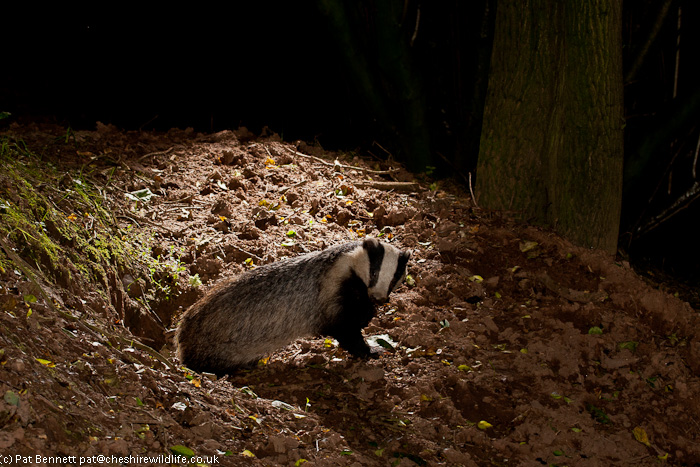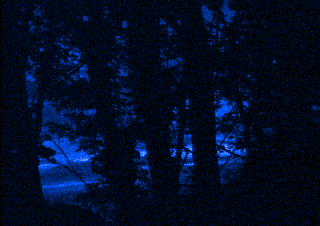After a week of sweltering weather, it rained this morning and as we set off for the badger sett, the evening was pleasantly cool, though not cool enough to deter the boys who were jumping into the river from the swing bridge as we crossed.
A movement on the bank beside the road caught Fran’s eye, and she called me to look. A young wren was quartering the ground in swift, jerky movements, and as we watched, it seemed that it could not yet fly, so tiny was it and so firmly engaged with the earth it searched. Eventually, I could not resist climbing the bank towards it, but when I came near, it zoomed off with scornful efficiency.
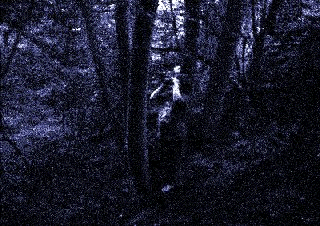 Where the road curved through the wood, we stopped in order to determine which way the air was drifting, but it was very still – not good for watching badgers undetected. We clambered over the barbed wire into the wood and slithered down the bank onto the muddy cattle track leading along the floor of the valley towards its mouth. After checking ahead with the binoculars through the vegetation that no badgers were about yet, we crept and slipped along the track until we were opposite the sett, and settled down beside a couple of trees.
Where the road curved through the wood, we stopped in order to determine which way the air was drifting, but it was very still – not good for watching badgers undetected. We clambered over the barbed wire into the wood and slithered down the bank onto the muddy cattle track leading along the floor of the valley towards its mouth. After checking ahead with the binoculars through the vegetation that no badgers were about yet, we crept and slipped along the track until we were opposite the sett, and settled down beside a couple of trees.
I knew that there were a few holes nearer the valley mouth, obscured from us by vegetation, grouped around the base of a large sycamore tree, from which a bare path led across the bank to the hole directly in front of us. This had a generous mound of excavated earth in front of it, topped with debris showing recent activity, and the path dropped down to the valley floor where a dead tree lay across the boggy ground and tiny stream which existed only because of the rain this morning.
The stream seemed the main activity in the wood. As the light faded, there was little bird song apart from the occasional collared dove with its complacent coo-cooing and strangely premature end to the phrase. A heron flew over with a harsh cry once, but all the time the six inch wide rivulet dribbled along, a silver gash in the bog, reflecting the dying light in the sky.
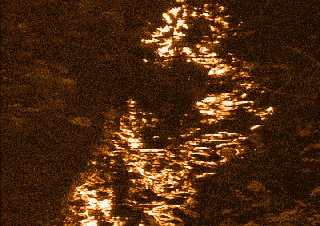 The usually non-existent trickle of water in front of me had created the wood, of course. The yellow mound of excavated soil from the badger hole showed the usual sandy subsoil in this area, sand ground down from the mountains of Wales, or maybe the Peak District, during the last ice age.
The usually non-existent trickle of water in front of me had created the wood, of course. The yellow mound of excavated soil from the badger hole showed the usual sandy subsoil in this area, sand ground down from the mountains of Wales, or maybe the Peak District, during the last ice age.
A possible badger’s head at the entrance to the hole resolved itself into a small clump of grass – strange how objects seen in good light can magically change in apparent nature, if only for a moment, in the twilight.
It was glaciers which had changed solid rock into sand and carried it here, locked in the ice. When the ice melted, the Cheshire plain would have been truly flat, but ready to be colonized by shrubs and trees and carved by rivers and streams – and by little trickles of water like that in front of me.
A bat flickered up and down the valley in the gloom.
While the Cheshire plain was covered by a great forest, this little stream appeared now and then with the rain, and carried a little bit more soil towards the river, and over the course of thousands of years, what was a furrow in the ground gradually assumed a shape and size worthy to be called a valley. Badgers and foxes, even with a vast forest to choose from, would have started to dig their tunnels in its sloping sides – so much easier than in level ground.
I was standing on the tree root, and my feet were beginning to hurt from the awkward pose held motionless for so long. I slowly rearranged my stance to a more comfortable angle.
In the last few moments of geological time, people have populated the forest and removed it, wanting to grow grass for their cattle, or other crops on the flat plain. Everywhere except the valleys, created by the rivers, streams – and trickles of water. These were too awkward for agriculture, and have been left as ribbons of woodland, havens for foxes, badgers, birds and bats, and a myriad other creatures.
Suddenly, across the valley a dim clump of grass became the head of a badger, scratching himself outside one of the holes further down the valley, only just recognizable through the intervening branches and vegetation. After a while, he cautiously ventured along the path into full view and went down the hole in front of me. A few minutes later, two cubs came bouncing down the same path, biting each others tails in absolute silence, and met the adult reemerging from the hole. One moment they were there, then they were claimed by the darkness as they set off up the bank on their night’s hunting.
We stumbled over mud to the mouth of the valley and then crossed the grassy flood plain of the stream which our little trickle of water joins. In the gloaming, we walked back and found that the boys were still dropping from the bridge into the river, and we remembered how warm water is in the dark when the sun has gone down.
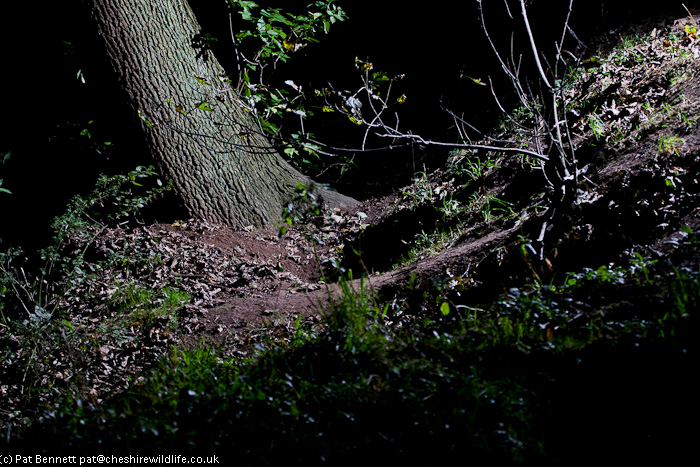 I’m lighting up badger setts with a two flash setup – the key light on a lighting stand or bolted to a tree to splash light from the side, and a flash on the camera to put detail in the shadows. However, to get a nighttime look, perhaps it’s better to just use the one key light as above, leaving the shadows black and featureless.
I’m lighting up badger setts with a two flash setup – the key light on a lighting stand or bolted to a tree to splash light from the side, and a flash on the camera to put detail in the shadows. However, to get a nighttime look, perhaps it’s better to just use the one key light as above, leaving the shadows black and featureless.